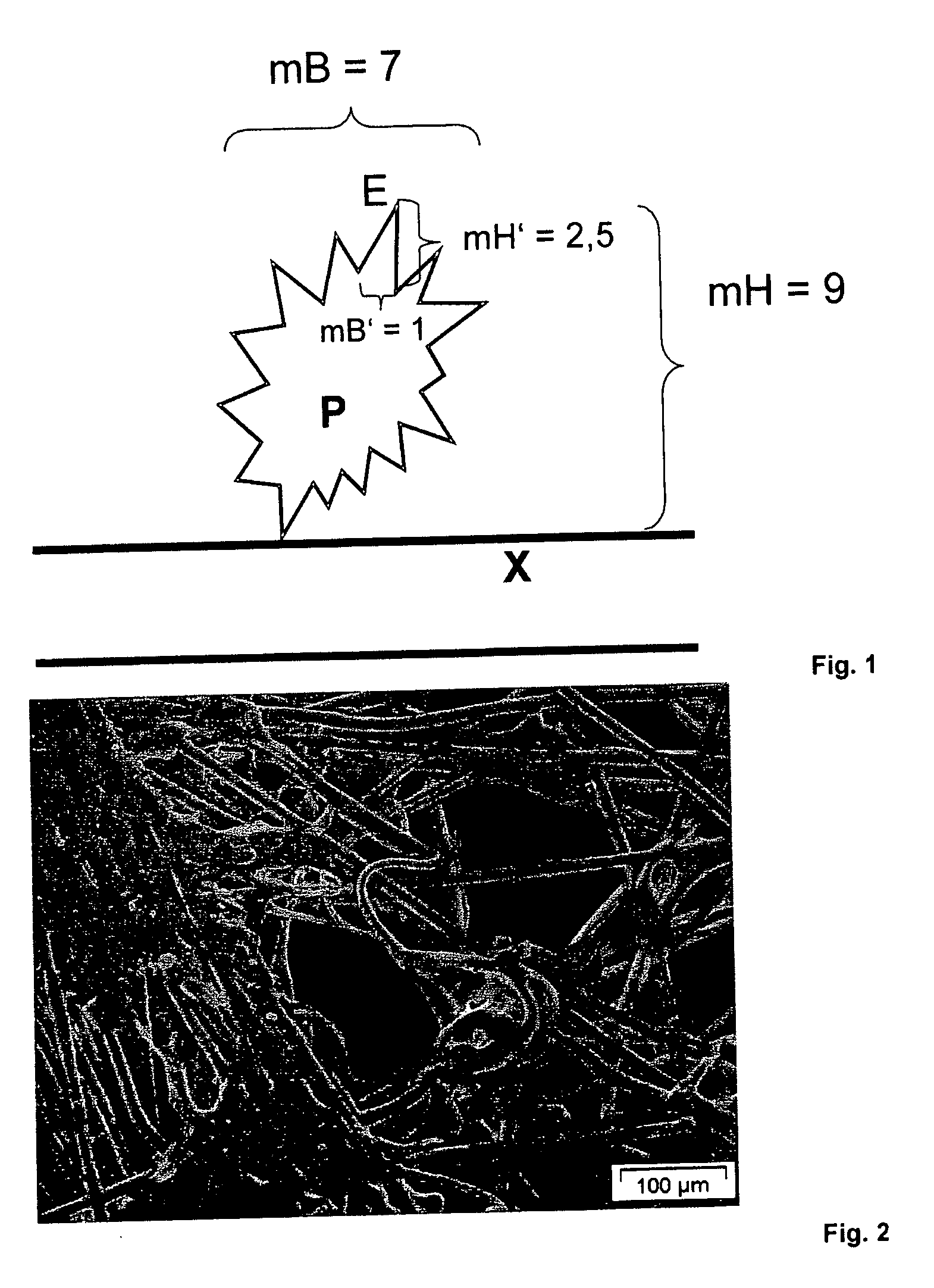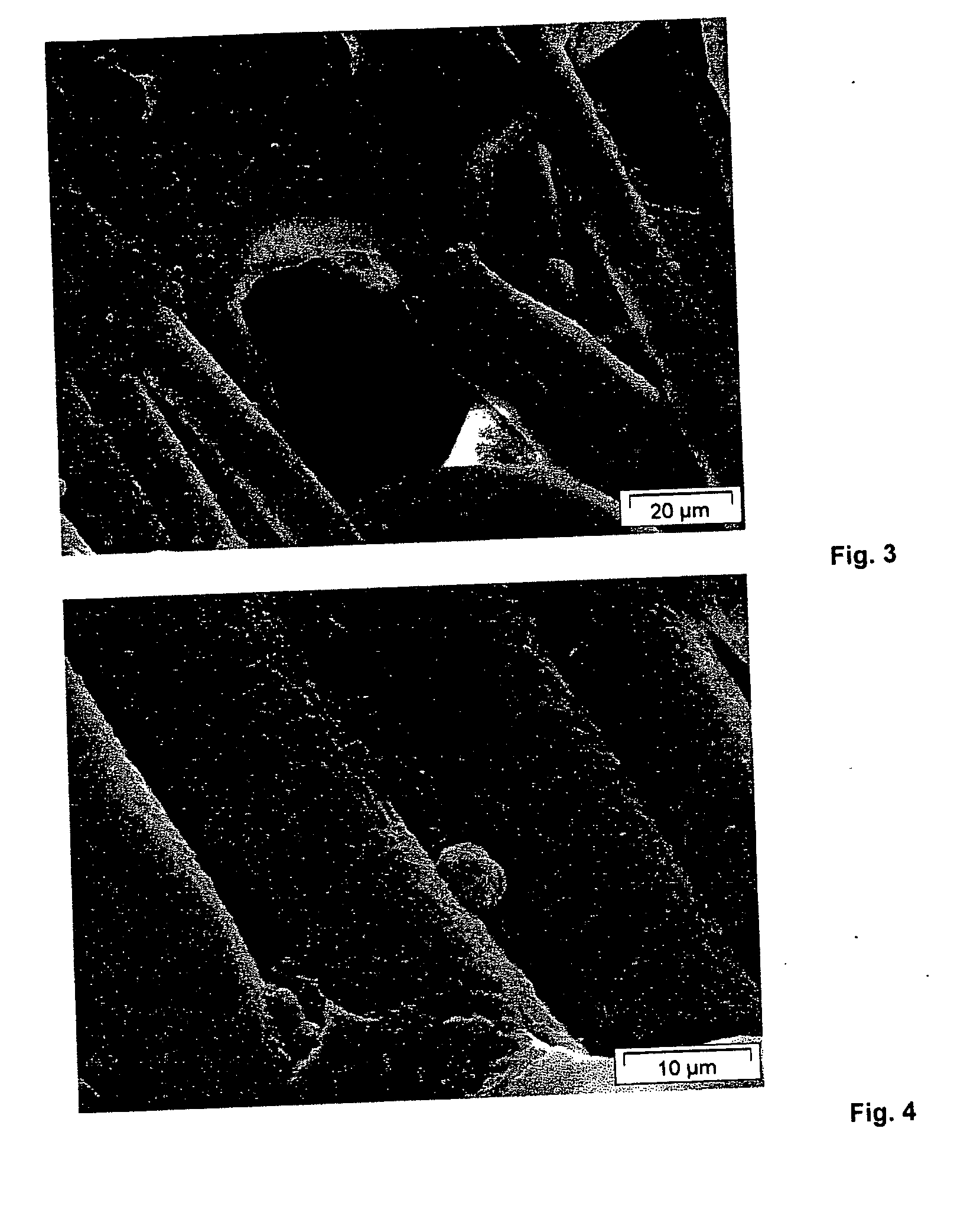Textile substrates having self-cleaning properties
a technology of textile substrates and self-cleaning, which is applied in the direction of weaving, lotus effect fibres, synthetic resin layered products, etc., can solve the problems of structure-forming particles, the structure responsible for the self-cleaning surface, and the hydrophobicization of surfaces that does not provide self-cleaning properties
- Summary
- Abstract
- Description
- Claims
- Application Information
AI Technical Summary
Benefits of technology
Problems solved by technology
Method used
Image
Examples
example 1
[0052] A polyethylene terephthalate (PET) web (Freudenberg, FS22325) is roll coated in a continuous process with a sol comprising 5 g of TEOS, 5 g of 5% by weight hydrochloric acid, and 5 g of GLYMO in 90 g of ethanol, the sol having been initially stirred at room temperature for 2 h, at a track speed of 10 m / h, and dried at 150° C. for 30 seconds.
[0053] The web thus treated is then coated, on the same apparatus and at the same temperature, with a suspension of 1 g of Aerosil VPLE 8241 in 99 g of ethanol, the ethanol further comprising 0.1 g of GLYMO and 0.1 g of TEOS and also 0.1 g of 5% by weight hydrochloric acid.
example 2
[0054] A PET web (Freudenberg, FS22325) is roll coated in a continuous process with a sol comprising 5 g of TEOS, 5 g of 5% by weight hydrochloric acid, and 5 g of GLYMO in 90 g of ethanol, following stirring at room temperature for 2 h, at a track speed of 10 m / h, and dried at 150° C. for 30 seconds.
[0055] This web is then coated, on the same apparatus and at the same temperature, with a suspension of 2.5 g of Aerosil VPLE 8241 in 97.5 g of ethanol, the ethanol further comprising 0.25 g of GLYMO and 0.25 g of TEOS and also 0.25 g of 5% by weight hydrochloric acid.
example 3
[0056] A PET web (Freudenberg, FS22325) is roll coated in a continuous process with a sol comprising 5 g of TEOS, 5 g of 5% by weight HCl and 5 g of GLYMO in 90 g of ethanol, following stirring at room temperature for 2 h, at a track speed of 10 m / h, and dried at 150° C. for 30 seconds.
[0057] This web is then coated, on the same apparatus and at the same temperature, with a suspension of 5 g of Aerosil VPLE 8241 in 95 g of ethanol, the ethanol further comprising 0.5 g of GLYMO and 0.5 g of TEOS and also 0.5 g of 5% by weight hydrochloric acid.
PUM
| Property | Measurement | Unit |
|---|---|---|
| particle size | aaaaa | aaaaa |
| temperature | aaaaa | aaaaa |
| aspect ratio | aaaaa | aaaaa |
Abstract
Description
Claims
Application Information
 Login to View More
Login to View More - R&D
- Intellectual Property
- Life Sciences
- Materials
- Tech Scout
- Unparalleled Data Quality
- Higher Quality Content
- 60% Fewer Hallucinations
Browse by: Latest US Patents, China's latest patents, Technical Efficacy Thesaurus, Application Domain, Technology Topic, Popular Technical Reports.
© 2025 PatSnap. All rights reserved.Legal|Privacy policy|Modern Slavery Act Transparency Statement|Sitemap|About US| Contact US: help@patsnap.com


